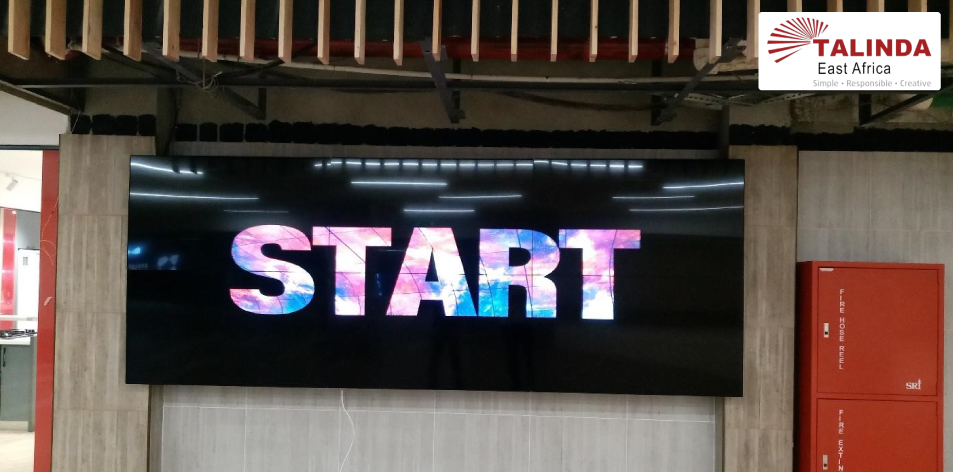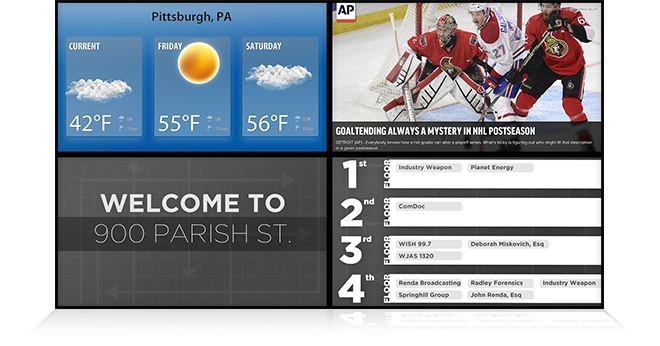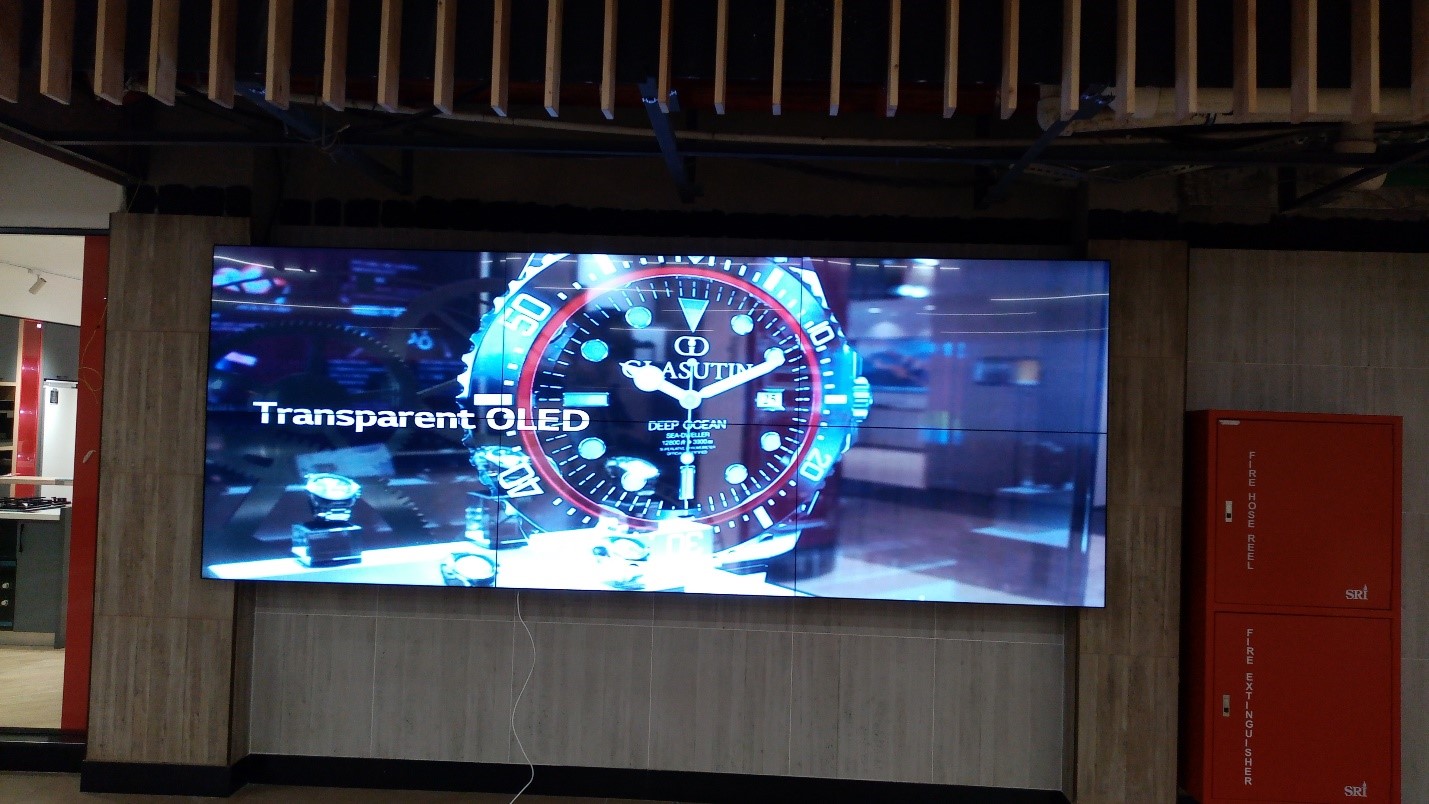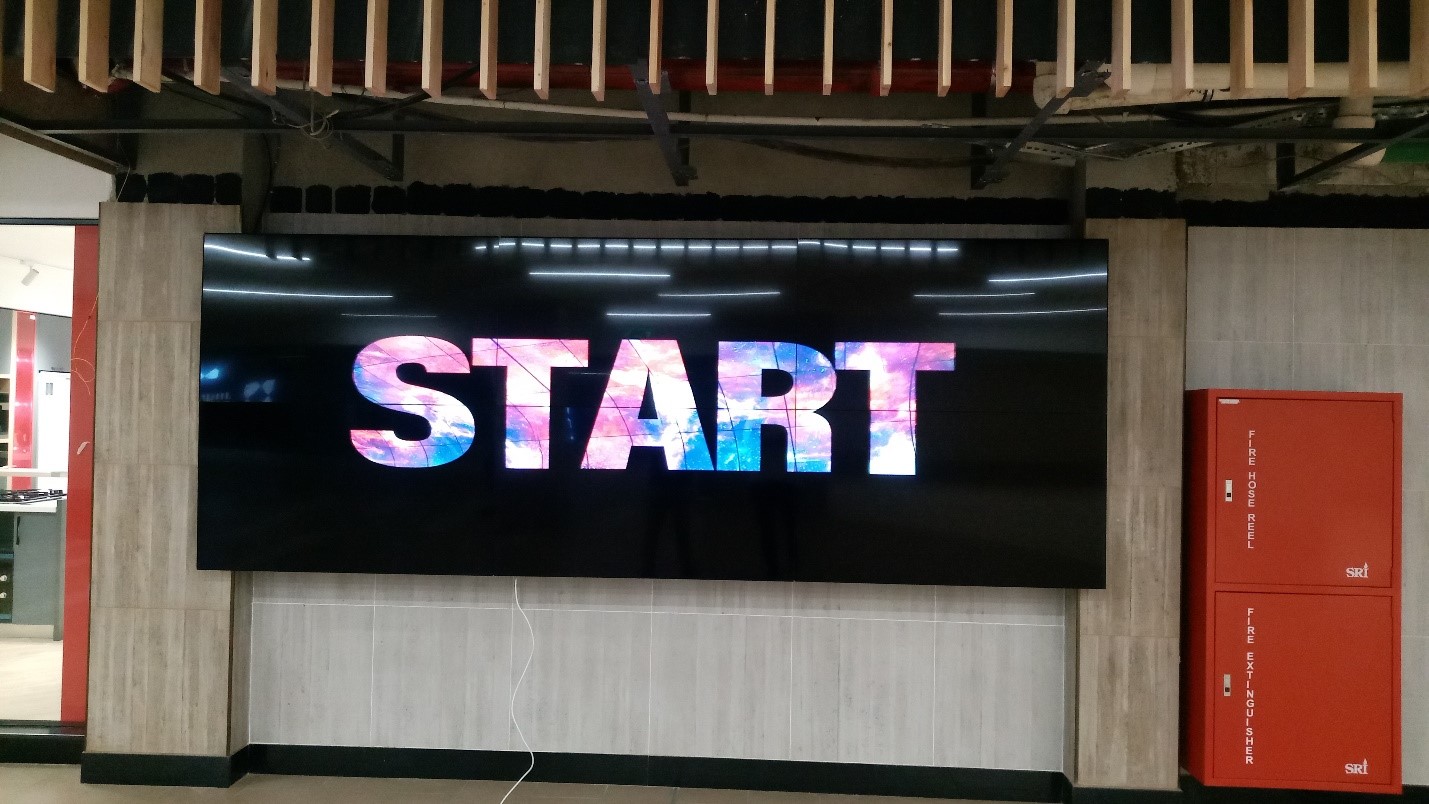
Talinda East Africa: Grab All The Attention With A Video Wall!
 TALINDA East Africa
TALINDA East Africa
Simple · Responsible · Creative
Grab All the Attention with a Video Wall!
Are you looking for a Video wall installation in Kenya? Look no further. Talinda East Africa has got you covered. Your search for a larger screen display has ended. It does not matter whether you are building now or are looking for a technology upgrade.
What is a Video Wall?
A video wall is a multi-display wall that is created by joining multiple screens together to display a larger image or windows of multiple images. The display technology can be LCD or LED panels, tiles, cubes, or projection screens.
A video wall can be as simple as one image from a single source stretched across multiple screens.
A Video Wall at Sarit Centre, Nairobi
Alternatively, it can be multiple images from multiple sources, including live video feeds, on multiple displays. These type of video walls offer greater flexibility, control, scalability and creativity.

Types of Video walls Technology
There are different types of video walls in the market. Your preferred choice is based on the use for different applications from basic to complex. For instance, a video wall for a weather station can be different from one in a luxury high-end club.
Video walls include and are not limited to the following;
Panel based video walls
Companies like Samsung, LG and Panasonic are the leaders in providing panel based video walls. They provide flat screen panels with slightly thinner boundaries (known as bezels) than TVs. Panel based video walls are very cost effective, however, problem is that they do not provide the desired support for 24*7 operations in certain cases and there are issues in terms of colour calibration. This means that the panels do not look the same in terms of the displayed output. This limits the desired output effect that one requires.
Cube based video walls
Companies like Barco are the market leaders in providing cube based video walls. Such video walls have a small projector mounted behind a display panel. The projector and panel are integrated together to give excellent output quality. In addition, the boundaries between different panels is very small (< 1mm). Recently, Barco has introduced a zero bezel video wall in which the bezel thickness is just 0.1mm with many additional features that make the whole experience smooth and exciting. The only drawback with these is that they come at a very hefty price.
Projection based seamless displays
These are comparatively lesser known video walls, which provide all the benefits offered by cube based video walls but at a lower price. Multiple projectors are installed to project output onto a bigger screen. The output is 100% seamless because of a technology called edge blending and geometric correction. Using a projector can increase the area of projection. A display screen, which is even 50 feet wide, can be illuminated by using just a few projectors. There are a number of advantages associated with them like possible use of curved screens, proper color calibration, and behavior like a single screen.
Video Wall Components to Consider

When making an investment in a video wall,there are a number of important factors you need to keep in mind. Below are some of the technology behind video walls:
Displays
When planning your video wall, consider what type of display you’re going to use. You can choose from LED and LCD panels, tiles, cubes, and projector systems. Not all displays have the same level of brightness or resolution and these specifications will likely be important decision criteria. The more detail and sharpness you require, the higher resolution you need. You also need to consider the width of the display bezel. Newer displays feature ultra-narrow bezels that result in a more seamless image.
Video Extenders
Sometimes video wall processors can be located close to the displays and connected directly by video cables. In other applications, the video wall processor may need to be located in a server room or IT closet and the distance is too far to use a standard video cable. In these cases, video extenders needs to transport the video signals from the video wall processor to the displays. Video extenders might need to be used for cable distances as short as 30 feet. Some IP-based systems use small receivers (one per display) that can be mounted on the back of the displays. In these cases, the signal extension occurs over the LAN and there is no need for additional video extension.
Control
System control for multi-input and multi-window video walls can be performed in several ways. First, there is the video wall software that runs on the processor. This provides both content control and system management. Oftentimes administrators only want to allow users to have access to specific, pre-defined actions or control capabilities and no ability to change system management settings. A simple and often used solution is an external control system that sends commands to the control port of the video wall processor, typically through a serial (RS-232) or Ethernet (Telnet ) port. Some systems also support control via HTTP or XML. Control systems with touch screens can be designed and customized for simple and intuitive operator control.
Video Wall Processors
There are a number of types of video wall processors to choose from depending on your application today and your future requirements. First, today, the terms video wall processor and video wall controller are often used interchangeably. Their basic job is to segment video content for each display in a multi-display wall. A video wall processor is a video scaler that makes sure every source signal goes to the right screen with the right resolution. It takes an image and sends it to individual screens for display as one large, cohesive image. A video processor is in charge of taking the various inputs and putting them all together. An advanced video wall processor can take content from multiple sources for display on multiple screens. A video wall processor is similar to conventional video scalers, but with greater input, output and processing capabilities.
Application of Video Walls
Video walls are used in some of the cases below;
1. In the Travel industry it can be difficult for commuters to know their travel status in places like railway stations, airports, and bus stops. A video wall is the perfect medium to convey and display travel information.
2. With video walls, various types of data is monitored simultaneously. This eases Staff operations in control rooms and crisis management centers by navigating through complex data.
3. Media Houses use video walls to display information clearly for the audience.
4. In media and advertising, video walls help with digital signage in malls, companies’ reception or in customer experience centers.
5. Sports and entertainment in outdoor stadium experience or concert events, which in turn generate huge ad revenue for sponsors.
6. Weather Stations

7. Museums
Explore market solutions
No matter your video wall application, Talinda East Africa has a team of experts who can deliver a turnkey visualization solution, which is customized for your needs.
We hope this article gives you great insights in your quest to find the best video wall solution in Kenya. For further information, reach out to our ICT consultants and engineers by calling +254700446536 or email [email protected] to have a best solution designed for your space.
Location:
Kabarnet Road, off Ngong Road, Nairobi Kenya






